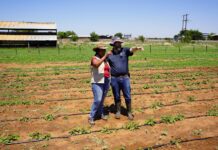Harvest forecasts are sometimes nearer to crystal-ball gazing than to true science and massive fluctuations are often the norm rather than the exception.
Witzenberg Properties in Ceres, was nearly spot-on with its forecast of 130 tons of cherries delivering 132 tons that were snapped up. According to Witzenberg Properties, South Africa’s Food Lover’s Market took the bulk of the volume, through a Tru-Cape Fruit Marketing brokered deal, while the smaller portion was sold, through Graaff Fruit, into Woolworths Foods.
According to Nico Verhoef, Financial Director at Witzenberg Properties, at one time, based on the lateness of the summer, they downgraded their initial cherry crop forecast from 130 to 82 tons. “We were thrilled with the final outcome and excellent class 1 pack-out of 81%,” he says. Rather than export their crop, Witzenberg Properties made the decision to keep their cherries on South African soil and with good results.
While cherries cost upwards of R650 000 per hectare to plant, it is considered a high-value crop because of its short window of availability and exclusivity. Currently, all South African cherries are picked, carefully, by hand so it is a labour-intensive few weeks. Much of Witzenberg Properties’ farms also have apples and pears, all packed at Ceres Fruit Growers and marketed through Tru-Cape.
The automated sorting and packing facility at Esperanto is an Italian-build which can manage about 600 tons of cherries using high-speed cameras to inspect each piece of fruit. “From full bloom until the day of the harvest there are 60 days to make it or break it, so you need perfect weather conditions in order to be successful,” says Tru-Cape’s procurement manager and grower Calla du Toit. “As with any natural product there are always risks involved, and frost is a big risk – specifically in the high elevation areas.
It’s normally quite cold in spring when the trees blossom so you need to manage that, and sometimes we get in helicopters to help us fight the frost danger or we will use mechanical blowers.” Du Toit explains the Rainier variety had initially been planted in large volumes, but now it has mostly been replaced by Sweetheart and Royal Dawn. “Sweetheart is doing very well in our climate and I believe that’s the one that will grow quite significantly,” he said.









